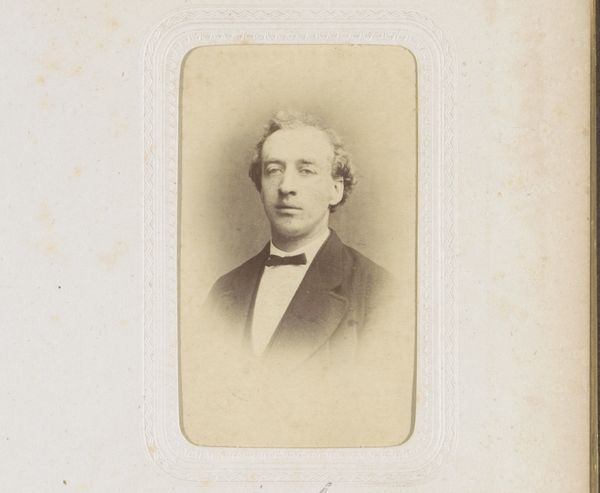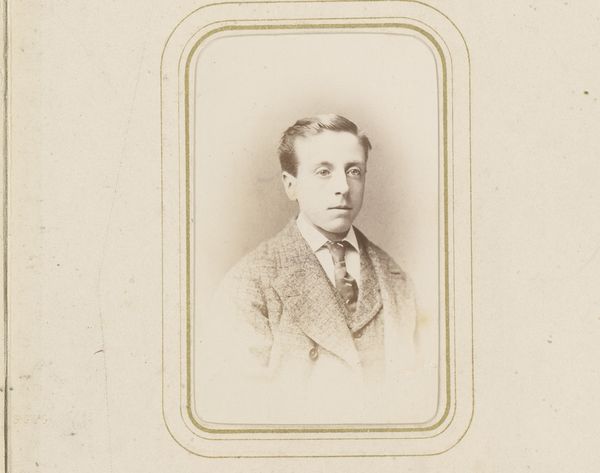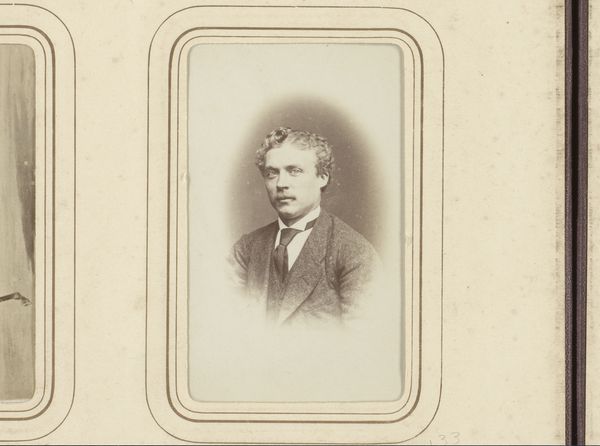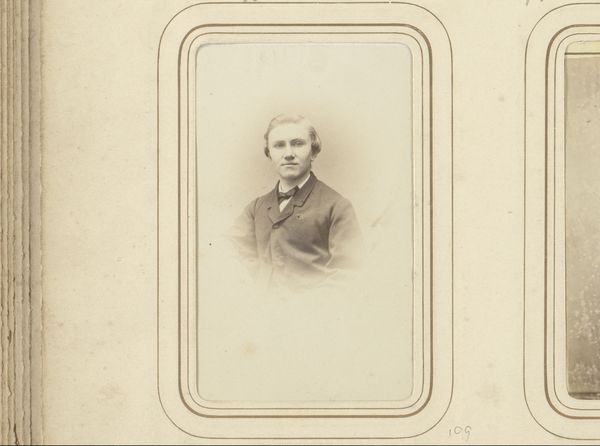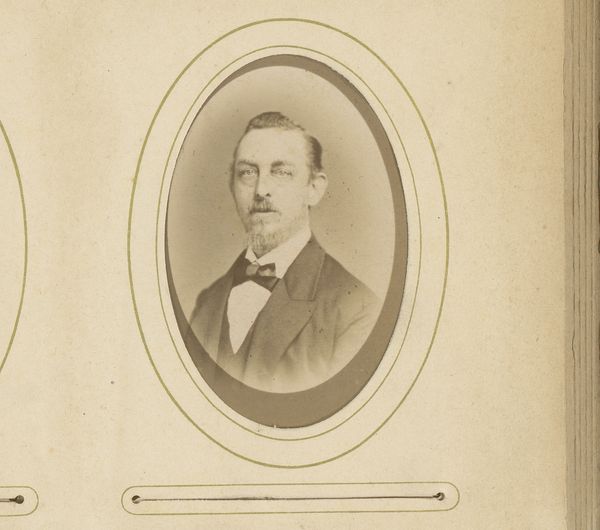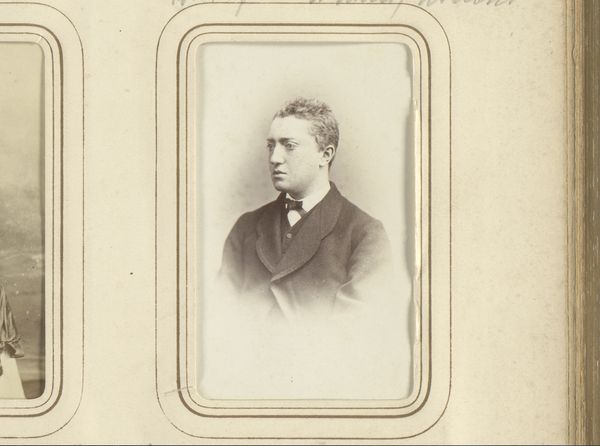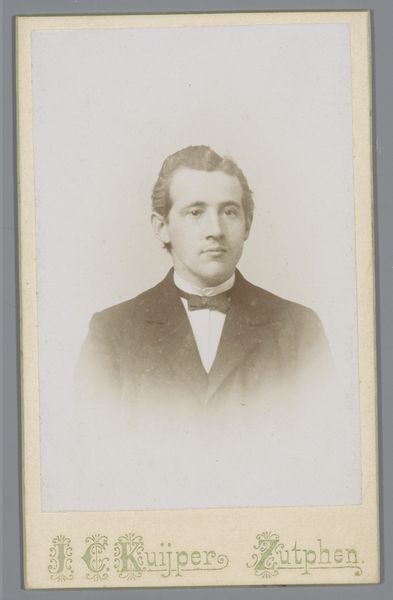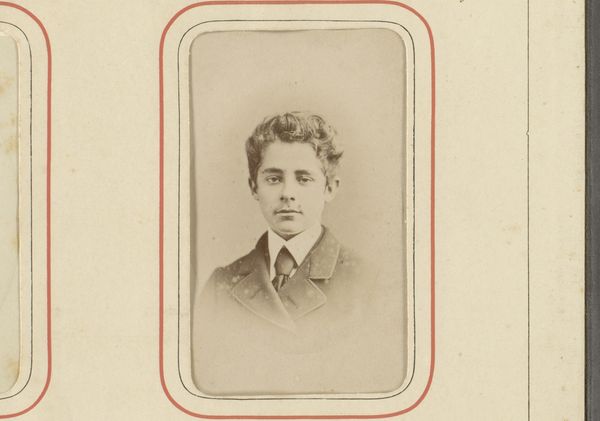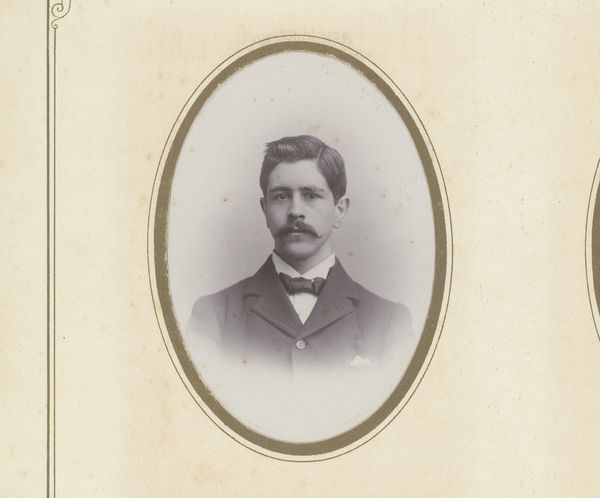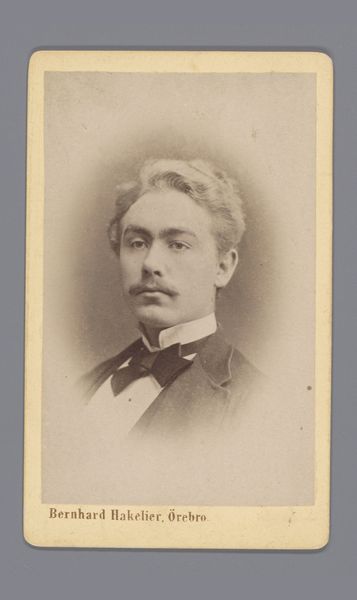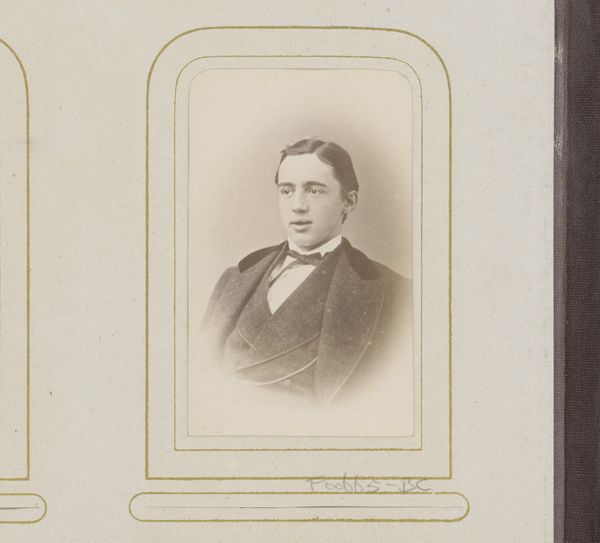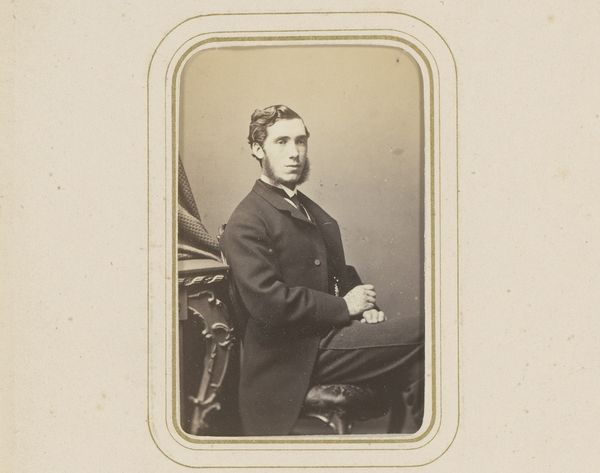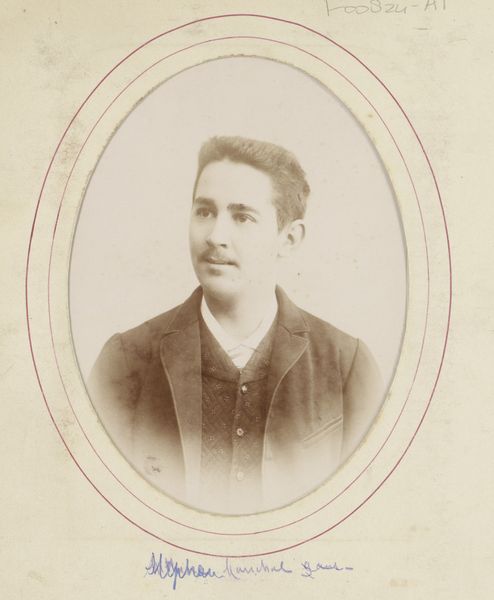
photography, gelatin-silver-print
#
portrait
#
photography
#
historical photography
#
gelatin-silver-print
#
19th century
#
realism
Dimensions: height 103 mm, width 64 mm
Copyright: Rijks Museum: Open Domain
Curator: This gelatin-silver print, "Portrait of an Unknown Young Man," comes to us from Woodbury & Page and dates roughly to 1870-1890. The Rijksmuseum is fortunate to have this glimpse into the past. What strikes you about this image? Editor: There's a melancholic feel, don't you think? A restrained posture, maybe a touch of weariness in his eyes, it resonates with broader ideas of representation and the male gaze, specifically in 19th-century photography. Curator: Absolutely, the era's photographic conventions certainly shaped his presentation. Photography studios became a key platform for projecting social status and respectability among the rising middle class. It makes you wonder, what was the ritual of sitting for this portrait like for him? Editor: Right, and let's think critically about that "unknown" status. It's powerful, isn't it? Erasing his identity forces us to confront the countless stories buried within archives. It’s more than just aesthetics; it's a confrontation with erasure. Who was he, and what systems led to his anonymity? Curator: A pertinent point. The commercialization of photography meant that studios like Woodbury & Page churned out countless images, sometimes with little record of the sitter beyond the print itself. The rise of photographic albums fueled this demand. Editor: It brings questions about representation to the forefront. Consider who *wasn’t* represented during this time. Wealthier clientele filled these albums. Who are we not seeing when we examine images like these? What's revealed when you recognize these are not neutral records but social constructions? Curator: The nuances of the photographic process at that time, with its specific chemical baths and printing methods, also add another layer to the image's historical significance. A gelatin-silver print like this demonstrates a certain level of technological advancement and craft. Editor: True, the chemistry is compelling, but let’s consider this photograph in terms of race, class, and gender as elements that intersect, contributing to both the visual outcome and how we, today, interpret this representation. Who gets remembered, and how? Curator: Indeed, thinking critically about whose stories are amplified and whose remain untold encourages a more comprehensive appreciation of historical images like this. Editor: So, this isn’t just a window into the past but a mirror reflecting back at us. It forces us to consider our own role in preserving and interpreting collective memory.
Comments
No comments
Be the first to comment and join the conversation on the ultimate creative platform.
